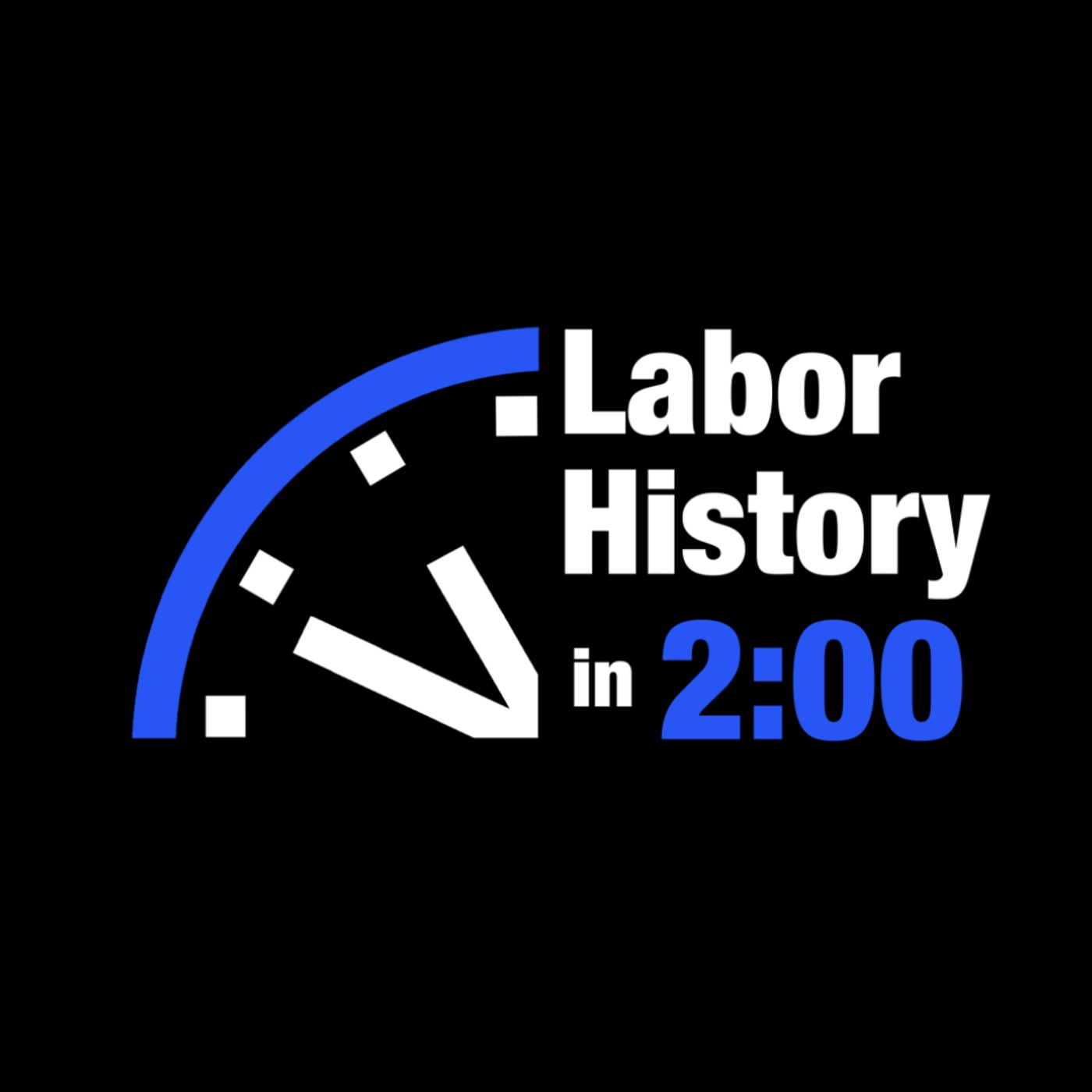Episodes

24 minutes ago
December 24 - A Very Tragic Christmas
24 minutes ago
24 minutes ago
On this day in labor history the year was 1913. That tragic Christmas Eve, came to be known as the Italian Hall Disaster in Calumet, Michigan. A Christmas party was being held for children of striking copper miners.

2 days ago
December 23 - The Right to Boycott
2 days ago
2 days ago
On this day in labor history the year was 1908. That was the day that three leaders of the American Federation of Labor, Samuel Gompers, John Mitchell, and Frank Morrison, were sentenced to jail terms for calling for a Boycott against Bucks Stove & Range.

3 days ago
3 days ago
On this day in labor history the year was 2005. At 2:35 that afternoon the Transport Workers Union in New York City called an end to their three-day strike. The union represented 34,000 workers who kept the cities buses and subways running.

4 days ago
4 days ago
On this day in labor history the year was 1907. At 3:45 that afternoon the Chilean military opened machine gun fire on a school occupied by striking workers. It is estimated that between one and three thousand people died that day in what came to be known as the Santa Maria School Massacre.

4 days ago
4 days ago
On this day in labor history the year was 1790. That was the day that work for many living in the new country of the United States began to change in a significant way. Samuel Slater operated the first cotton spindle machine to spin yarn in the U.S in Pawtucket, Rhode Island. The 48-spindle machine ran on the water power of Pawtucket Falls.

6 days ago
6 days ago
On this day in labor history the year was 1983. That was the day that a bitter national strike of Greyhound Workers came to a close. Nearly 13,000 bus drivers, mechanics and clerks had gone on strike. They were members of the Amalgamated Transit Union.

7 days ago
7 days ago
On this day in labor history the year was 1991. That was the day that thousands of workers at in U.S. General motor factories got some very bad news. The company’s CEO Robert Stampel announced that GM would eliminate 74,000 jobs and close 21 plants. The company was struggling.

Wednesday Dec 17, 2025
December 17 - The Fighting Deborah Samson
Wednesday Dec 17, 2025
Wednesday Dec 17, 2025
On this day in labor history the year was 1760. That was the day Deborah Samson was born in Plympton, Massachusetts. She was the first known woman to impersonate a man in order to fight in the Revolutionary War. Her family was poor. As a girl, young Deborah, became an indentured servant.

Tuesday Dec 16, 2025
December 16 - The Willmar 8
Tuesday Dec 16, 2025
Tuesday Dec 16, 2025
On this day in labor history the year was 1977. That was the day that eight women in Willmar, Minnesota stood up for their rights in the work place. The women worked at Willmar Citizens National Bank. These women were paid considerably less than the male employees.

Monday Dec 15, 2025
December 15 - The Death of a Courageous Leader
Monday Dec 15, 2025
Monday Dec 15, 2025
On this day in labor history the year was 2005. That was the day the labor movement lost a man who was willing to go to jail to fight for the rights of working people. Clinton Jenks was born in Colorado Springs in 1918. He learned of labor consciousness from his father, a postal worker.

